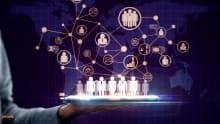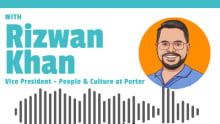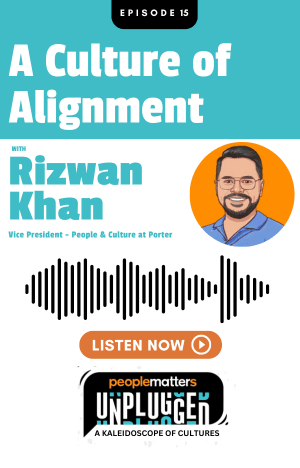"CEOs want HR to be the change agents": Peck Kem

Low Peck Kem is the Government Chief Human Resource Officer and Senior Director (Workforce Development) for the Public Service Division (PSD), Prime Minister’s Office of Singapore. She is responsible for professionalizing HR in the public sector of 16 Ministries and more than 60 Statutory Boards. Low is also the elected President of the Singapore Human Resources Institute SHRI.
Prior to her current appointment at the PSD, she was the Senior Director for Human Resources (HR) and Organizational Development (OD) for a not-for-profit organization, The Global Alliance for Improved Nutrition (GAIN) based in Geneva, where she was responsible for HR, OD, Legal, Internal Audit and Corporate Administration for 15 global offices.
Low has a unique combination of experience from a quality engineer to manufacturing manager to Vice President of HR in the private sector (Tandon, Western Digital, Hewlett Packard, Agilent Technologies & Avago Technologies), and as a Divisional Director of National HR Division in the Singapore Ministry of Manpower, prior to her current appointment. This combination has widened her perspective in private, public and NGO sectors, and the ability to view leadership from an Asian and European perspective.
In an exclusive interaction, Low shares her insights on her contribution in uplifting the capability of HR in Singapore, making Singapore the center of excellence for human capital management and developing leadership in Asia.
How did you land in HR and what brought you to Public Service Division? What was the mandate when you joined and what was the exciting part of your career?
Though trained as an electrical and electronics engineer, I have always been fascinated with the science of human behaviour. Being intrigued by the behavioural aspects of people, I eventually moved from the hard core science of engineering to the art of people management in Hewlett Packard.
I joined the Ministry of Manpower in 2007. The mandate I got was to uplift the capability of HR in Singapore, with the vision of making Singapore the hub of excellence for human capital management and leadership development in Asia. I joined the Public Service Division in 2014 after returning from Geneva. My mandate then was to provide professional HR leadership to the public sector HR and build a trusted HR community with public officers at the center.
With Singapore's vision to be a smart nation, The Singapore Public Service aims to be a smart government, serving as One Trusted Public Service with Citizens at the Center. In support of Singapore's vision, Public Sector HR aims to take a lead in technology enabled, progressive people practices. In order to achieve that vision, we first had to uplift the capabilities of the HR community and provide them with platforms and skills to be tech-savvy to adopt progressive HR policies in their respective agencies
Can you explain how are you uplifting the capability of human capital at the national level?
For the Ministry of Manpower, it was about human capital management at the national level. At PSD, it is human capital management for the whole of government. The Singapore Public Service is the largest employer in Singapore with over 145,000 employees. As the Chief HR Officer, I provide HR leadership to the 3000 HR professionals within public service. As Senior Director for Workforce Development in PSD, I lead a team in developing the public sector workforce to be ready for the future.
With Singapore’s vision to be a smart nation, The Singapore Public Service aims to be a smart government, serving as One Trusted Public Service with Citizens at the Center. In support of Singapore’s vision, Public Sector HR aims to take a lead in technology-enabled, progressive people practices. In order to achieve that vision, we first had to uplift the capabilities of the HR community and provide them with platforms and skills to be tech-savvy to adopt progressive HR policies in their respective agencies. We rolled out milestone HR programs in HR Foundation Program, HR Managers Program, and the apex HR Leadership Program, which are aligned to the national HR standards set by IHRP.
To be future ready, there are new skills and competencies needed to progress in one’s career and to remain relevant in the future. We developed competency roadmaps in partnership with our statutory board the Civil Service College, which runs most of the public sector milestone programs. We also work closely with organizations like Chartered Institute of Personnel Development (CIPD), Results Based Leadership (RBL) and IHRP. We require HR professionals to go through the IHRP certification and CIPD Group Experience Assessment to benchmark ourselves at a national and global level. In many of the public service milestone programs, we invite private sector business and HR leaders to share their expertise and experiences. We launched a Talent Attachment Program to second public sector talents to private sector companies to expose them to innovative business practices and better understand the business operating environment. It is about not operating in our own cocoon, but to open our eyes to the wider world beyond public service.
In terms of employee engagement, leaders' expectations of HR are not only to engage with the employees, but to be able to engage with the customers or citizens whom we serve. HR also needs to equip leaders with the skills and abilities to be able to engage with employees and customers
How complex was it to build an outside-in perspective?
When I was brought in from the private sector to join the public service as a mid-career hire, one of the key values I brought in was the outside-in perspective. The public service appreciates the need to leverage on the strength of a diverse workforce. HR’s role is to create an environment and culture which encourages and is open to different views and opinions. When an organization has a culture of being open to diverse views, being willing to learn and seeing the value of diversity, then it is not difficult for a mid-careerist to bring in the outside in perspective. The challenge is not to be too fixated on your past experience and think that your outside-in perspective is the only right way to go. We have to be mindful to make sure that we share the context of the perspective, whether it is applicable and implementable in the public sector. Though I have worked in different private sector companies, I continuously learn from other great organizations apart from HP, Agilent and GAIN.
It is so important to always keep an open mind. Every time I meet someone or attend some conference, I would think about “What can I learn and how might we bring that back to the organization and adapt it to create value for my organization?” Once people can see how you are bringing value to your organization, they will be a lot more open to welcome new ideas and opinions.
If you look back at your career, how much has the role of HR really changed and where do you think the opportunity for HR professionals lies?
HR has definitely evolved over the years! The only resource in any organization that appreciates in value and contribution is our workforce. Hence, the competitive advantage for any organization is how they might best leverage on the full potential of their workforce.
In the past, HR’s role evolved around governance, administration of rewards, payroll, employee champion and legislative compliance. Traditional HR roles were payroll, recruitment, and employee relations. HR used to be assessed on the ability to hire in the talent required at the right time and right price. Being the employee champion, HR had to be seen as being able to fight for better benefits for employees and the ability to pay people on time. Employee engagement levels and attrition used to be HR’s KPIs. Strategic HR was a small aspect of HR’s work as we were too busy with the day to day operations.
In today’s context, with technology enablers, progressive HR departments would automate, outsource, use shared services and shift work from administrative to strategic. Technology enablers like Robotic Process Automation (RPA), cloud-based solutions, smart outsourcing and automation helps HR departments be more effective. What the CEOs want from HR is to become a change agent and a strategic partner. They want HR to be able to understand the business and the challenges they face well enough not only in the short-term but also in the long-term. They then need to translate those into people challenges and work towards preparing the workforce to be ready for the future. So the ability of HR is to do strategic planning, to know how to engage with the senior management team, the strategic planners, organization development and the finance team and to develop the business and workforce strategy.
In terms of employee engagement, leaders’ expectations of HR are not only to engage with the employees, but to be able to engage with the customers or citizens whom we serve. HR also needs to equip leaders with the skills and abilities to be able to engage with employees and customers. Employees today want to join companies that are value based and do meaningful work. Customers today want to deal with companies which have strong values and principles. The way to project those values to our customers is through our workforce and our engagement with our customers.
Now is the Golden Era for HR in Singapore as we have identified HR as one of the 23 Industry Transformation Sectors in support of the Smart Nation agenda through SkillsFuture , contributing to business competitiveness and economic transformation in Singapore. Along with SkillsFuture, a national movement to encourage skills upgrading and mastery, the government, union and employers have come together in a tripartite partnership to invest in upgrading the HR Profession to support businesses and the Singapore economy. HR Professionals have the support and avenues to upskill and use technological advancements to provide added value to their businesses.
Now is the Golden Era for HR in Singapore as we have identified HR as one of the 23 Industry Transformation Sectors in support of the Smart Nation agenda through SkillsFuture
Based on your approach to continuous learning, what are some of the best practices you have observed? Is there something that you have experimented on and which has worked for the public service?
In the public sector, we invest in the continuous development of our officers. We have a broad guideline of about 100 training hours a year for every officer, of which a certain percentage is catered for digital learning. As such, it is not difficult to get people to attend courses and clock the hours, and hopefully learn. The challenge has always been about learning effectiveness, and its application back at work.
In today’s VUCA environment where jobs are evolving and new skills are needed, we have to develop a continuous learning mindset in our officers. As we tell officers to upskill and be ready for the future, the challenge is to predict what the future jobs will be and what are the future skills required.
The best predictor of future skills required would be through a strategic workforce plan. When HR directors work with the senior management team to come up with strategic plans for the next three to five years, you would have a view of not just the number of people you need but also the type of skills and competencies needed in the future. And once you have a way of measuring where you are in terms of skill levels, you will know the skills that you need and you will have the ability to know where the gaps are. We have set up a platform to equip you so that you can really work towards the future.
As an example, we developed a HR Competency Framework which has 14 functional competencies with four levels of expertise for each competency. Apart from using this for developmental purposes in identifying skills gap and interventions to close the gap, we adopted a Competency based HR Management system. What it means is that we will use competencies as a common currency for appointments, recruitment, promotions, development and recognition. We have a recruitment website Careers@Gov where public sector vacancies are posted, indicating competencies required to perform the jobs apart from academic qualifications. We receive an average of a hundred applicants for every job and through the use of technology to aid application, screening and video interviewing; candidates are given same opportunity to be selected based on competencies. Interviewees can record their interview responses using their mobile devices and then send us their responses. This helps our interviewers be impartial in the selection and appointment process. We also adopt a competency based concept in our succession planning and career development forum where we look at potential jobs, potential candidates using the competencies framework.
Image Credits: Careers@Gov















